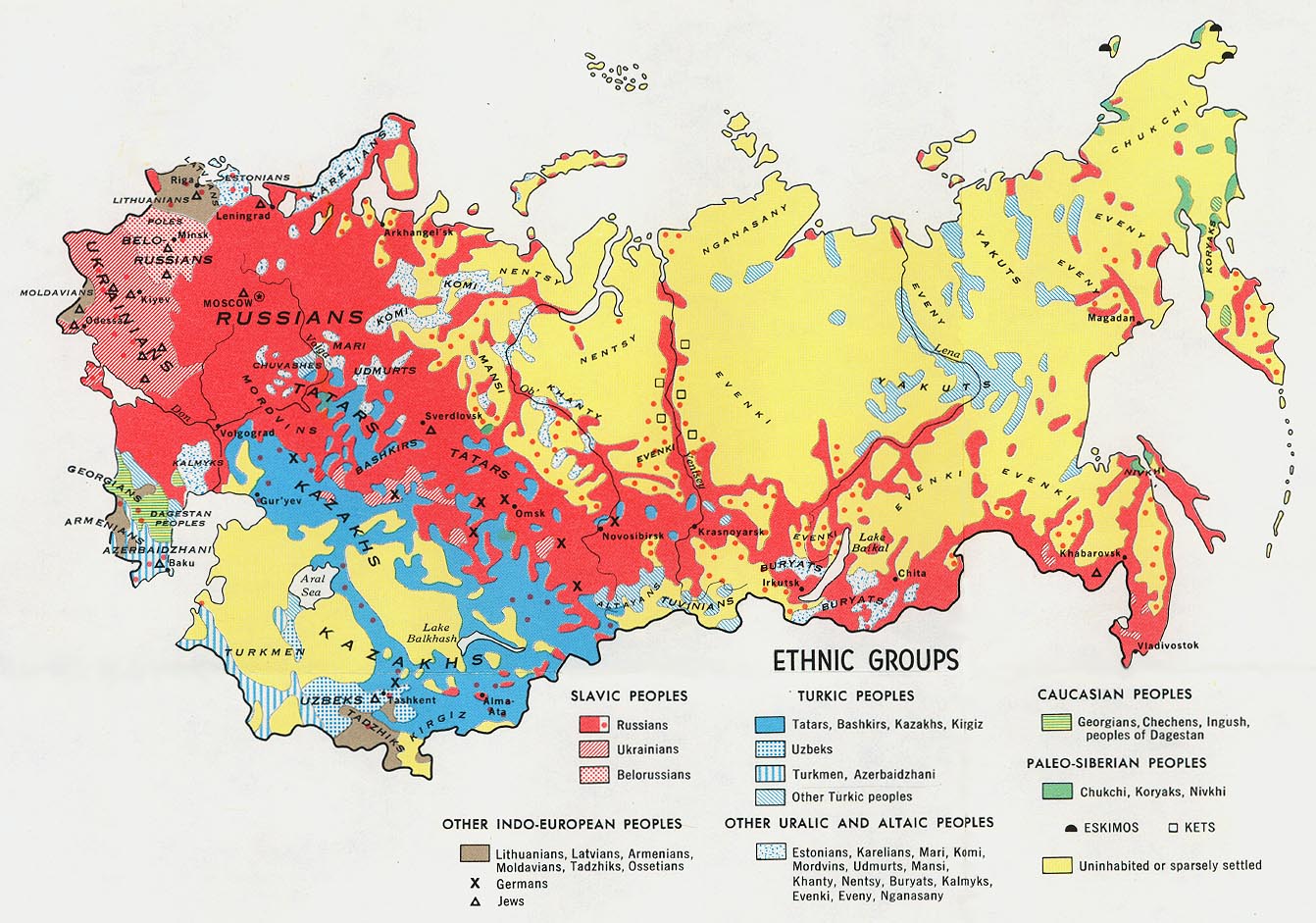
On Monday, we heard the term "postcard people" used to talk about the Hutsul people who live in the Carpathian Mountain region. It's no coincidence that people like the Hutsuls have retained their traditional art and culture while other ethnic groups in the USSR did not. "Postcard people" refers to indigenous communities who were considered to be icons of folk culture in Soviet propaganda. Because of their special status they were not subject to many of usual Soviet reforms. The origins of this policy lies in the influence of Marxist theory in Soviet ethnography and also the form that the process of colonization took in the USSR.
Marxist theory explains cultural diversity among human societies by arguing that societies evolve through the stages of civilization based on technological development or mode of production, especially the division of labor. (The stages are in order: tribalism, primitive communism, feudalism, capitalism, and communism.) Because evolutionary change was fueled by changes in technology, material culture (physical things distinct to a particular culture) was of utmost importance. Soviet era ethnographers focused on the physical attributes of cultures like the Hutsuls (for example, their dress, music, and arts & crafts). The purpose of was to preserve their culture (for example in museums). Also, because it was believed that technological advancement, esp. industrialization, was the key to advancing a society or pushing it to evolve, the Soviet government imposed reforms on the majority that it wanted to evolve but not so with postcard people who were supposed to remain distinct (even considered primitive).
By preserving select "postcard people" Stalin was able to distinguish his imposed reforms from other forms of colonization such as that European countries imposed elsewhere. (European colonization usually aimed at "civilizing" populations, for example converting them to Christianity, teaching English, and imposing dress codes, not necessarily modernizing their technology.)
The USSR sought a monumental task: to bring thousands of ethnic groups and hundreds of nations across Eurasia under one administrative umbrella. This required a monumental standardization project. Local officials needed to follow the same guidelines in Siberia as in Balkans. To aid them, the Bureau of Ethnography provided documentation of local cultures and "scientific" evidence to support the Soviet argument that colonization was not an inherent bad but rather it was just that Europe had used it to exploit people. In this context, postcard people like the Hutsuls provided Stalin with propaganda for highlighting the diversity of the USSR and, in particular, how well the Soviet government had managed to maintain diversity in the collectivity.
If you are interested in learning more about Soviet ethnography and/or ethnic policy and affirmative action in the USSR, there is a great book by Francine Hirsch called "Empire of Nations". Also "Peoples of the RSFSR" is an encyclopedia with all the ethnic groups in the territory covered by the USSR.
2 comments:
Really interesting, Jessica! I'm reminded, however, of that book our friend Liz read for Brian Porter's class about "Making Music in the Polish Tatras," and how select aspects of culture are preserved as groups try negotiate what constitutes authentic song, dance, crafts, etc. I'd be curious to find out which aspects of Hutsul culture have been consciously promoted, and whether there are other aspects that have been suppressed or dismissed.
I find your post intriguing, Jessica. You are correct in that the Soviet Union, composed of 15 ethnically-based union-level republics and many more autonomous republics, had so many more ethnic groups that existed within those republics.
You did mention that the USSR under Stalin used the Hutsuls to show how well certain elements of national cultures were preserved, but you could have elaborated on the subjugation of national cultures under Stalin, as well as under other different Soviet leaders.
However, I do like and agree with your arguement that the rural and communal Hutsul traditions embodied the ideal of Soviet culture against the backdrop of bourgeois Europe. Excellent post.
Post a Comment